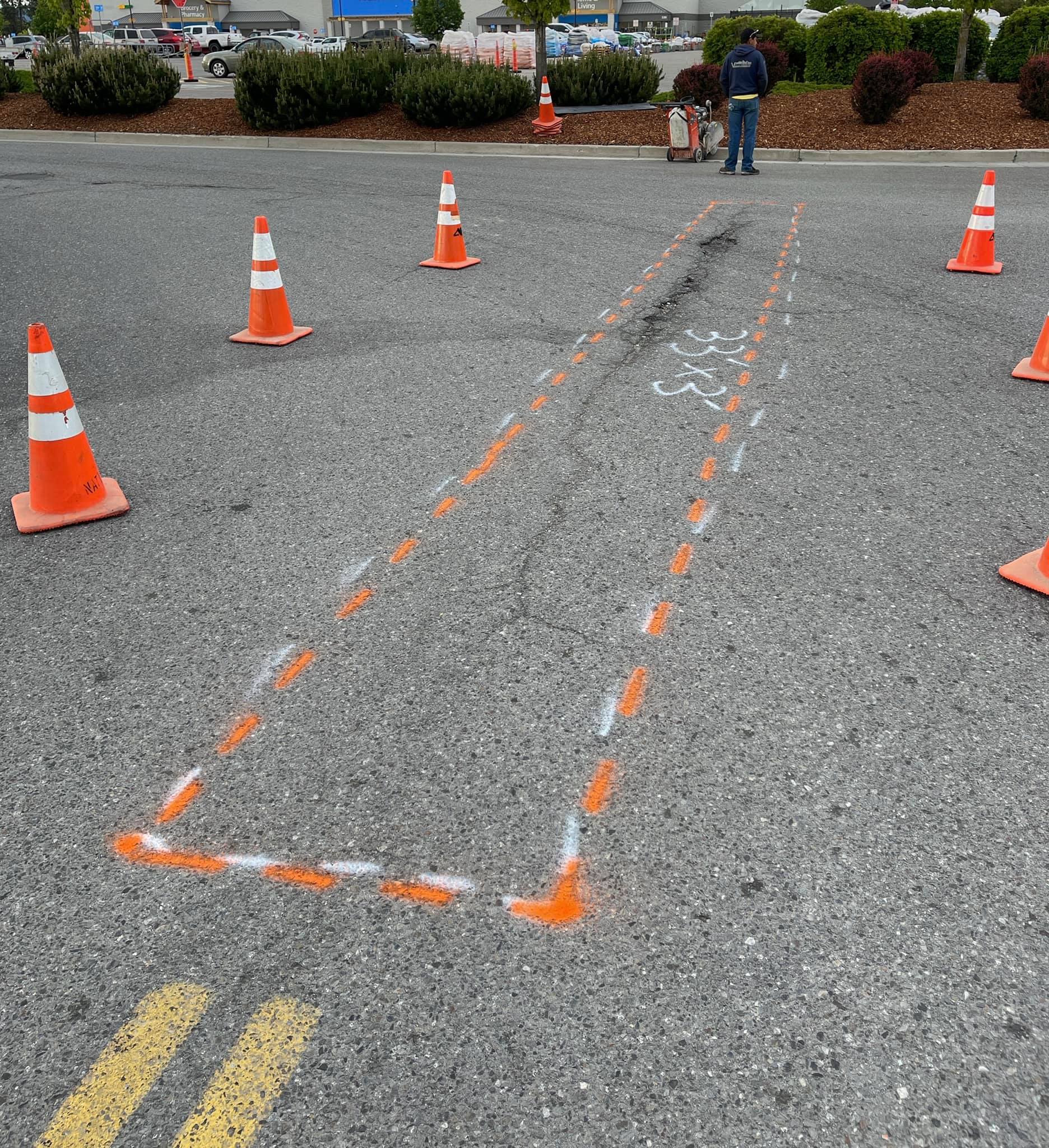Winter can be tough on asphalt surfaces, especially in places like North Idaho, where freezing temperatures, snow, and ice are a constant challenge. As the season progresses, the combination of freeze-thaw cycles, heavy snow removal equipment, and de-icing chemicals can take a toll on driveways, parking lots, and roadways. Knowing how to identify and address winter-related asphalt damage early can save you time and money while preventing safety hazards.
Common Types of Winter Asphalt Damage
Here are some of the most common issues to watch for as winter transitions to spring:
1. Cracks
Freeze-thaw cycles are one of the main culprits of asphalt cracking. Water seeps into small surface imperfections, freezes, and expands, causing the asphalt to crack. These cracks can range from tiny hairline fractures to large gaps.
2. Potholes
Potholes form when water infiltrates cracks, freezes, and weakens the asphalt structure. Over time, the weight of vehicles exacerbates the damage, creating dangerous and unsightly potholes.
3. Surface Deterioration
De-icing chemicals and salt can break down the top layer of asphalt, leaving it rough and uneven. This not only impacts the surface’s appearance but can also reduce its durability.
4. Drainage Issues
Snowmelt and rain can reveal drainage problems, leading to water pooling on the asphalt surface. Standing water accelerates deterioration and can make cracks and potholes worse.
How to Spot Winter Damage
Regular inspections are key to identifying asphalt damage early. Here’s how to spot potential problems:
- Walk the Surface: After the snow melts, take a close look at your asphalt. Check for visible cracks, holes, or rough patches.
- Look for Puddles: Pay attention to areas where water pools after rainfall or snowmelt, as these are signs of poor drainage.
- Monitor Traffic Wear: High-traffic areas often show damage more quickly. Look for signs of rutting or depressions where vehicles frequently travel or park.
- Inspect Edges: The edges of your asphalt surface are often the first to deteriorate. Check for crumbling or erosion along the sides.
Repair Solutions for Winter Damage
Once you’ve identified the damage, it’s time to take action. Here are the best repair options for each type of issue:
1. Filling Cracks
Small cracks can often be repaired with a quality crack filler. For best results, clean the area thoroughly before applying the filler to ensure proper adhesion.
2. Pothole Repairs
Potholes require more intensive repairs. A cold patch asphalt mix is a temporary solution for winter, but a professional hot asphalt repair in the spring provides a longer-lasting fix.
3. Resurfacing
If surface deterioration is widespread, resurfacing may be the best option. This involves applying a new layer of asphalt over the existing surface, restoring its appearance and durability.
4. Improving Drainage
Address drainage issues by regrading the asphalt surface or installing proper drainage systems to direct water away from problem areas.
5. Sealcoating
Sealcoating is a preventative measure that protects your asphalt from future damage. If your surface hasn’t been sealed recently, consider scheduling this service in the spring.
Why Hire Professionals for Asphalt Repairs?
While some minor repairs can be done DIY, winter damage often requires the expertise of a professional. At Asphalt Pros USA, we have the tools and experience to repair and protect your asphalt surfaces effectively. From filling cracks to full-scale resurfacing, we’ll ensure your property is safe, durable, and ready for the seasons ahead.
Preventing Future Winter Damage
Prevention is always better than repair. Here are some tips to minimize winter damage to your asphalt:
- Sealcoat Regularly: A protective sealcoat helps prevent water infiltration and damage from de-icing chemicals.
- Repair Damage Early: Address cracks and potholes as soon as they appear to stop them from worsening.
- Maintain Proper Drainage: Ensure water flows away from your asphalt to avoid pooling.
- Schedule Professional Maintenance: Routine inspections and maintenance by professionals can catch issues before they become major problems.
Conclusion
Winter may be harsh on asphalt, but with regular inspections and timely repairs, you can keep your surfaces in great shape. If you’ve noticed cracks, potholes, or other damage to your asphalt, don’t wait—contact Asphalt Pros USA today for a free consultation. We’re here to help North Idaho businesses and homeowners protect their investments and ensure safe, long-lasting asphalt surfaces.


